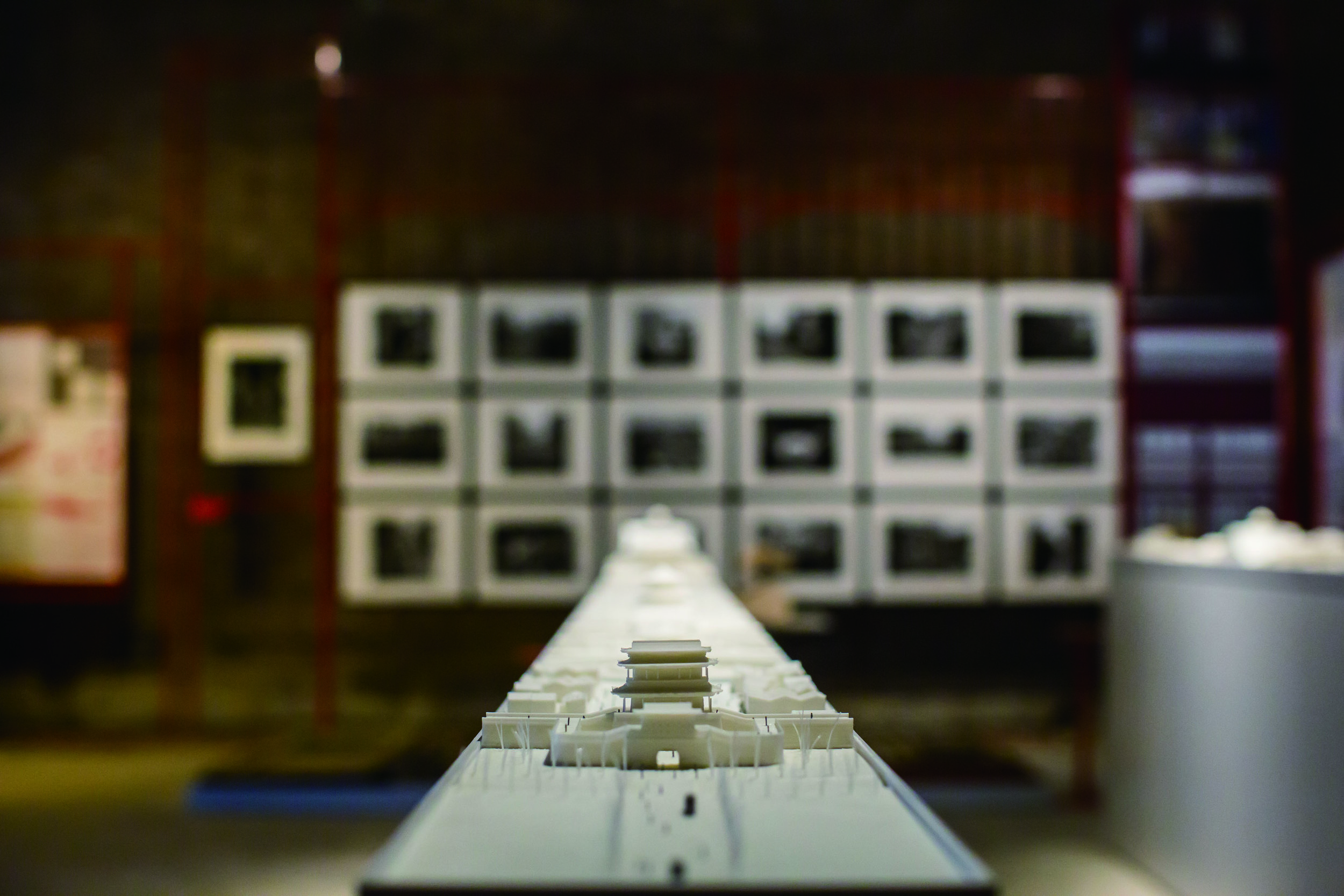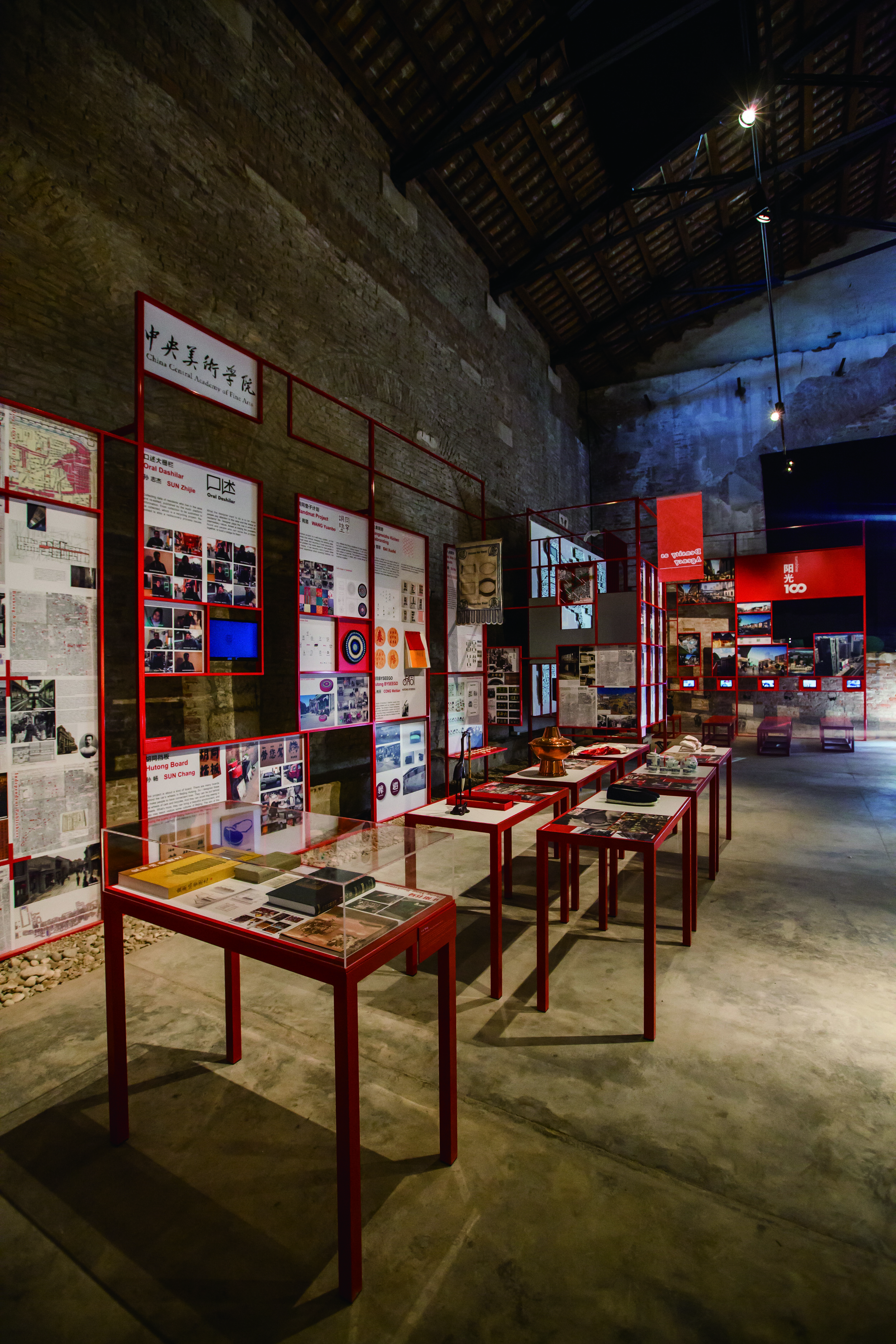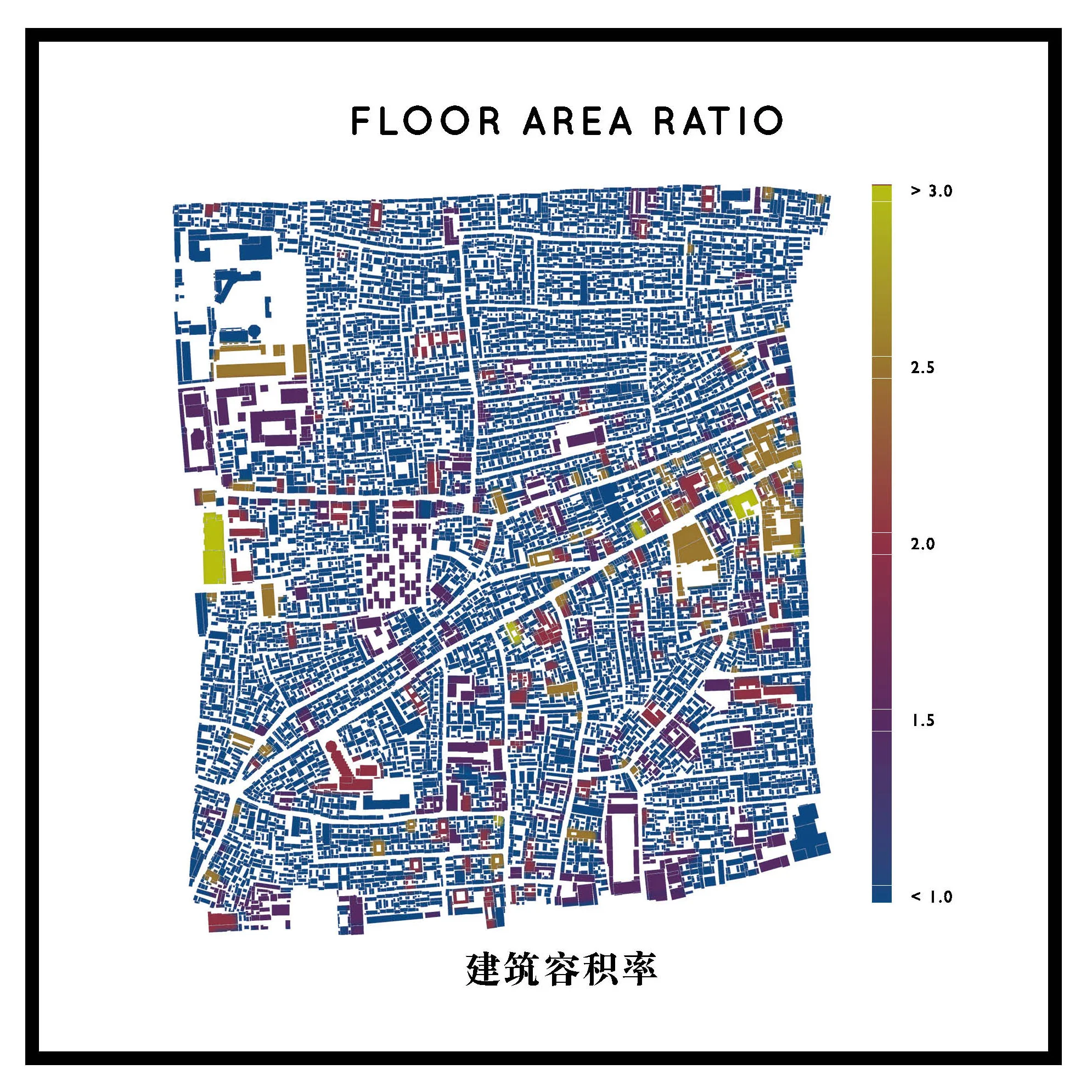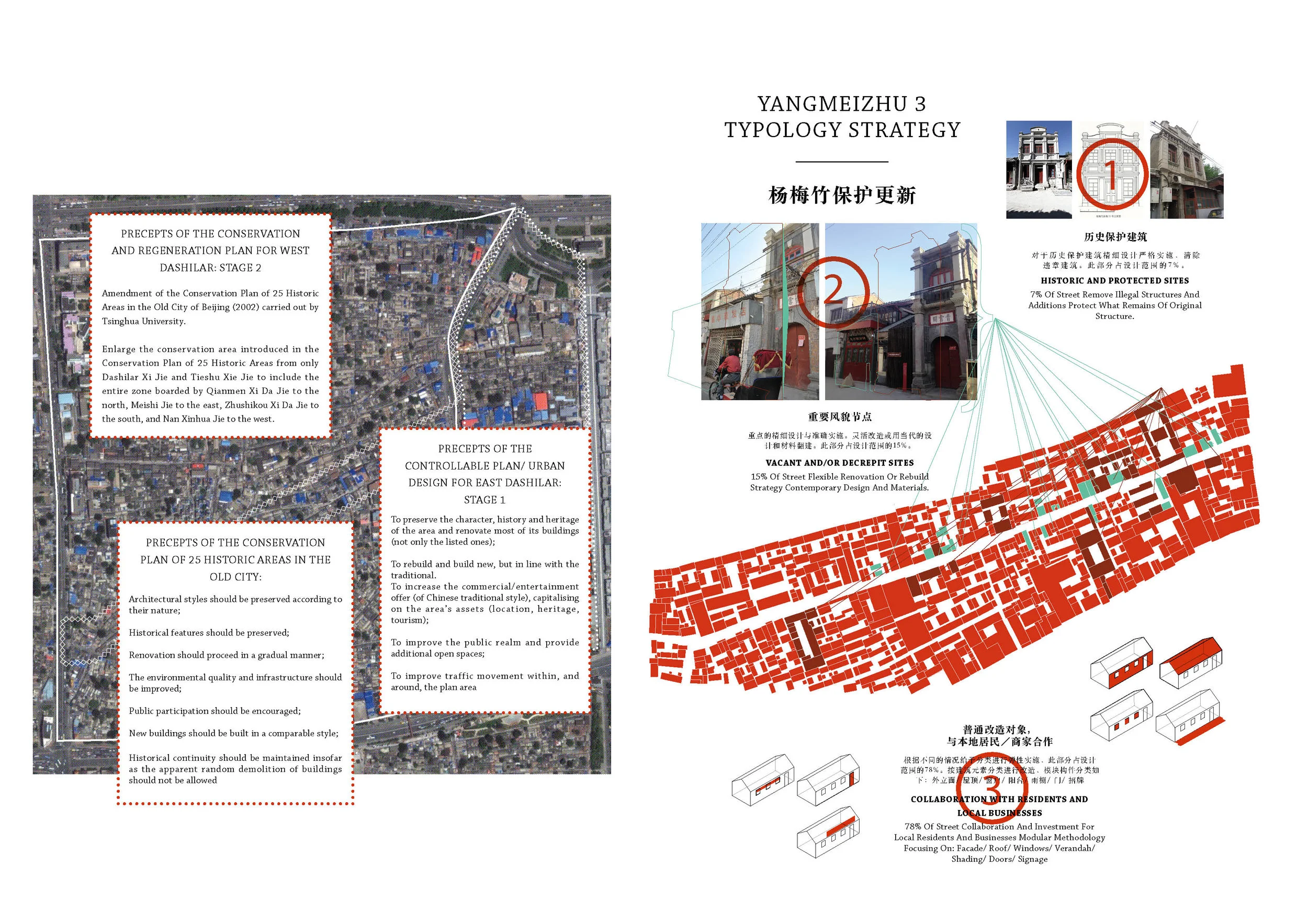DASHILAR PROJECT
Dashilar Project was launched in 2011 as an alternative redevelopment strategy for Dashilar, one of Beijing’s most original historic quarters, but also an area euphemistically termed an Urban Corner due to its crumbling infrastructure and architecture. Changes in policy, as well as a complicated property ownership situation inherited from previous governments led to stagnation in the area’s development, with the rest of the city’s ever-increasing, animated skyline highlighting Dashilar’s worsening condition. Commercial vacancies, an exploding migrant population and lack of developed infrastructure started to alienate Dashilar, once the part of the central business district, from the city as a whole. Additionally, successive Master Plans were unable to deal with a dynamic, extremely complex situation as Dashilar. The plans over estimated the amount of property that could be obtained through not taking into account Beijing’s extremely buoyant property market and the increased costs of relocation. Also, the plans ultimately focuses on the final result, without allowing for delays in this process, or the possibility of only partial implementation.
Conventionally (although admittedly simplified) after a thorough investigation of an area earmarked for development, the Planner will provide the Developer with a Master Plan in exchange for a commission. This Plan may go through much iteration, be challenged legally, or modified heavily through financial/environmental constraints and Public consultation, but the nature of the contract usually means that completion of the transaction is upon delivery of the Master Plan, and not upon the projects completion. This differs from a usual Architectural agreement, where final payment is often withheld until completion of the project. It is some form of handover, where the integrity, at least structurally, of the project is as certain as possible for the client. Without the possibility of understanding the project in-situ, the Planner provides a Master Plan that can be disjointed from the social and political reality of the situation, particularly within China. The Master Plan in this situation is treated as hard science to be implemented like a construction drawing, and certainty of the projects completion from the Developer can only come through green-field development or heavy-handed support from the Government and Judiciary system. This type of relationship, a very linear consultant-client transfer of information, may not be the best methodology, particularly when the plan applies to a complicated situation unable to be understood through metrics and statistics.
大栅栏项目@2014威尼斯双年展
DASHILAR HISTORIC MAPS
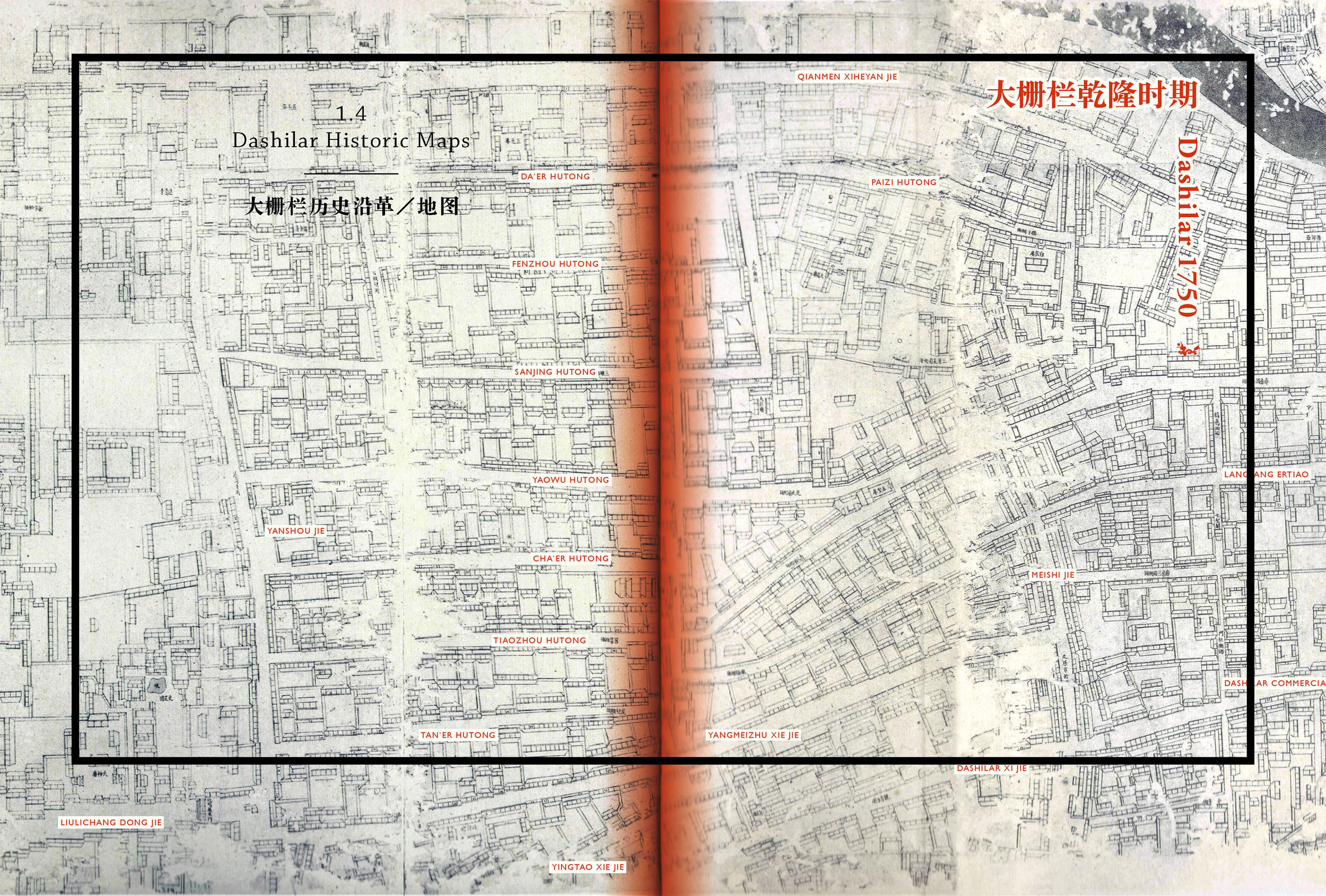
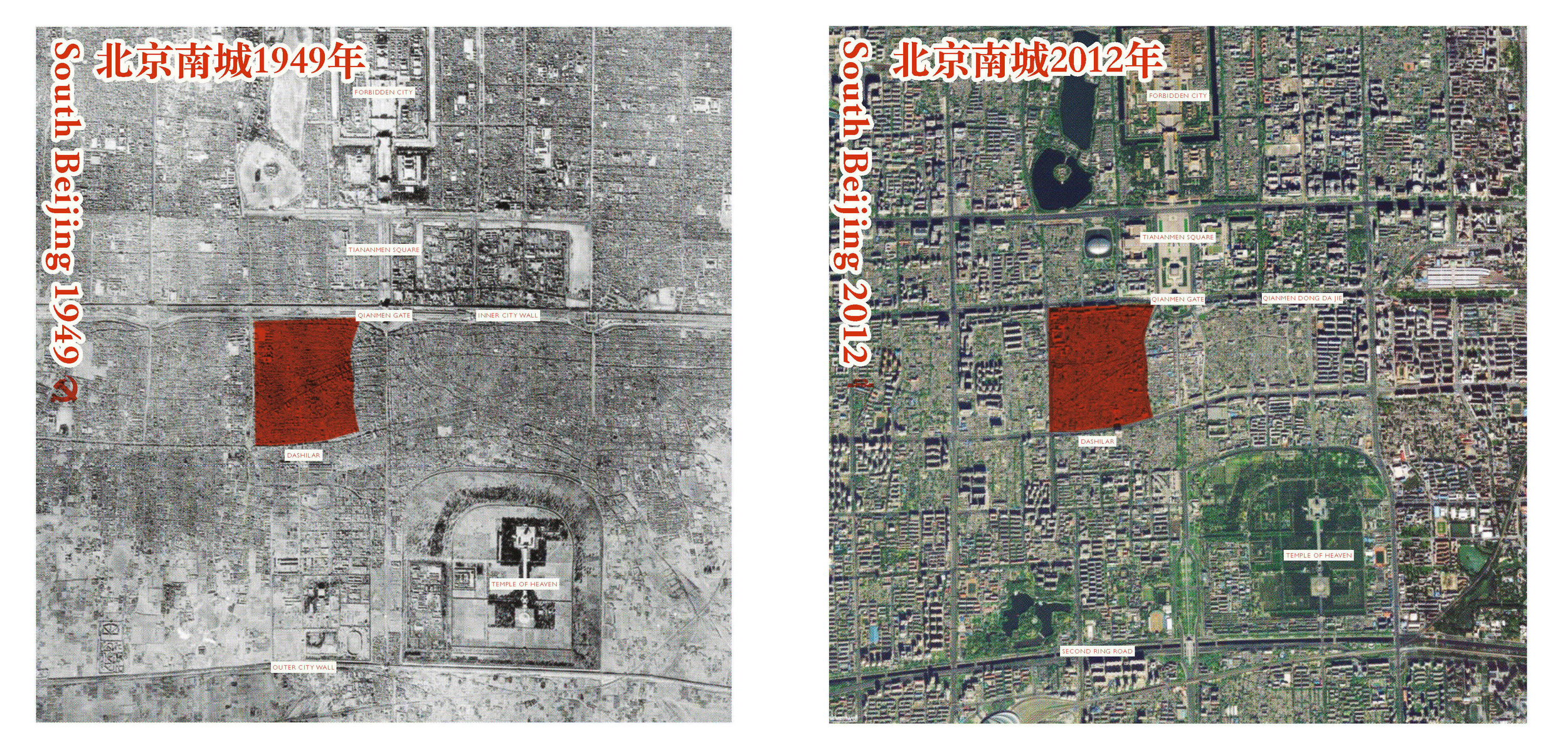
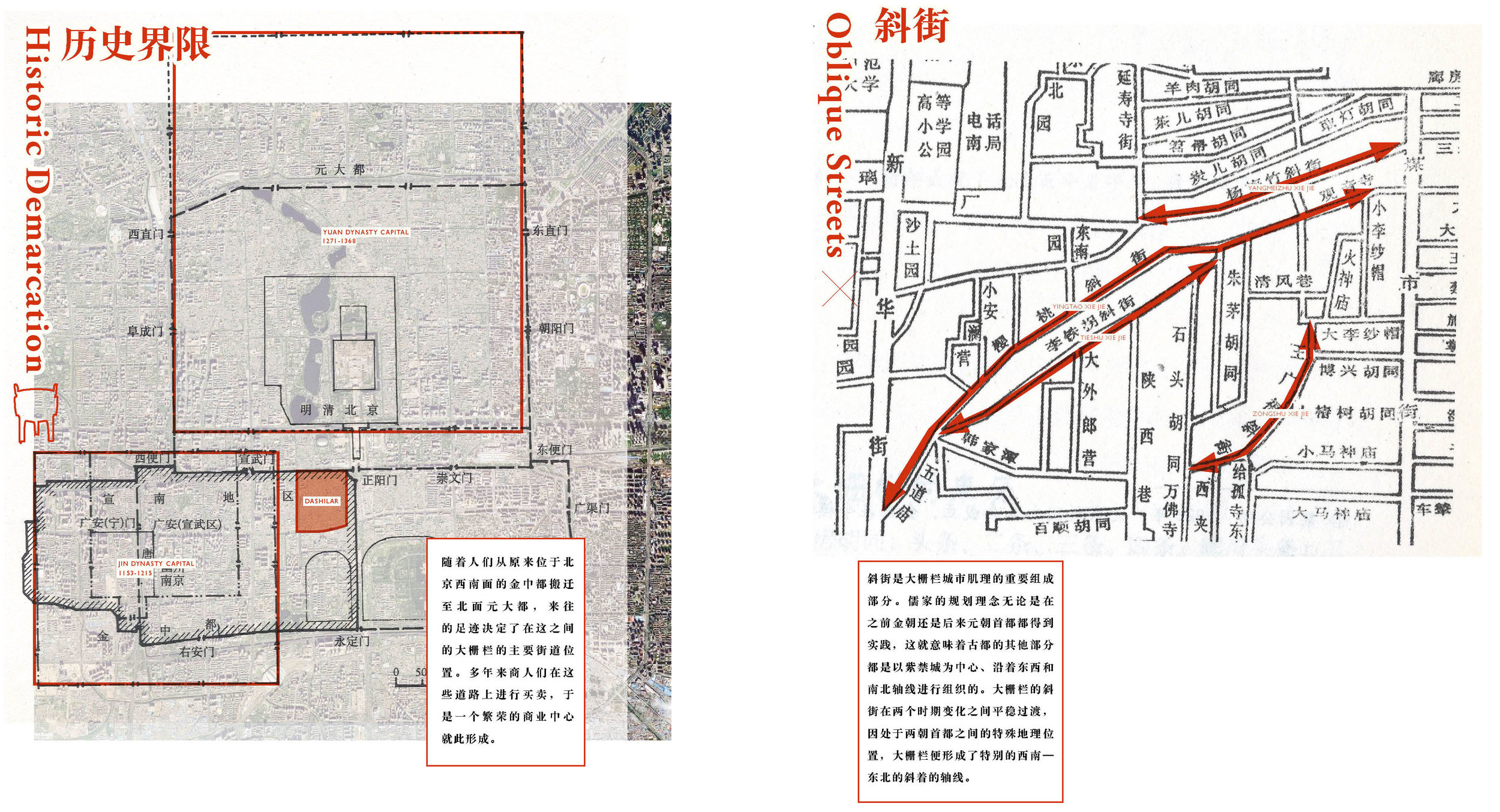
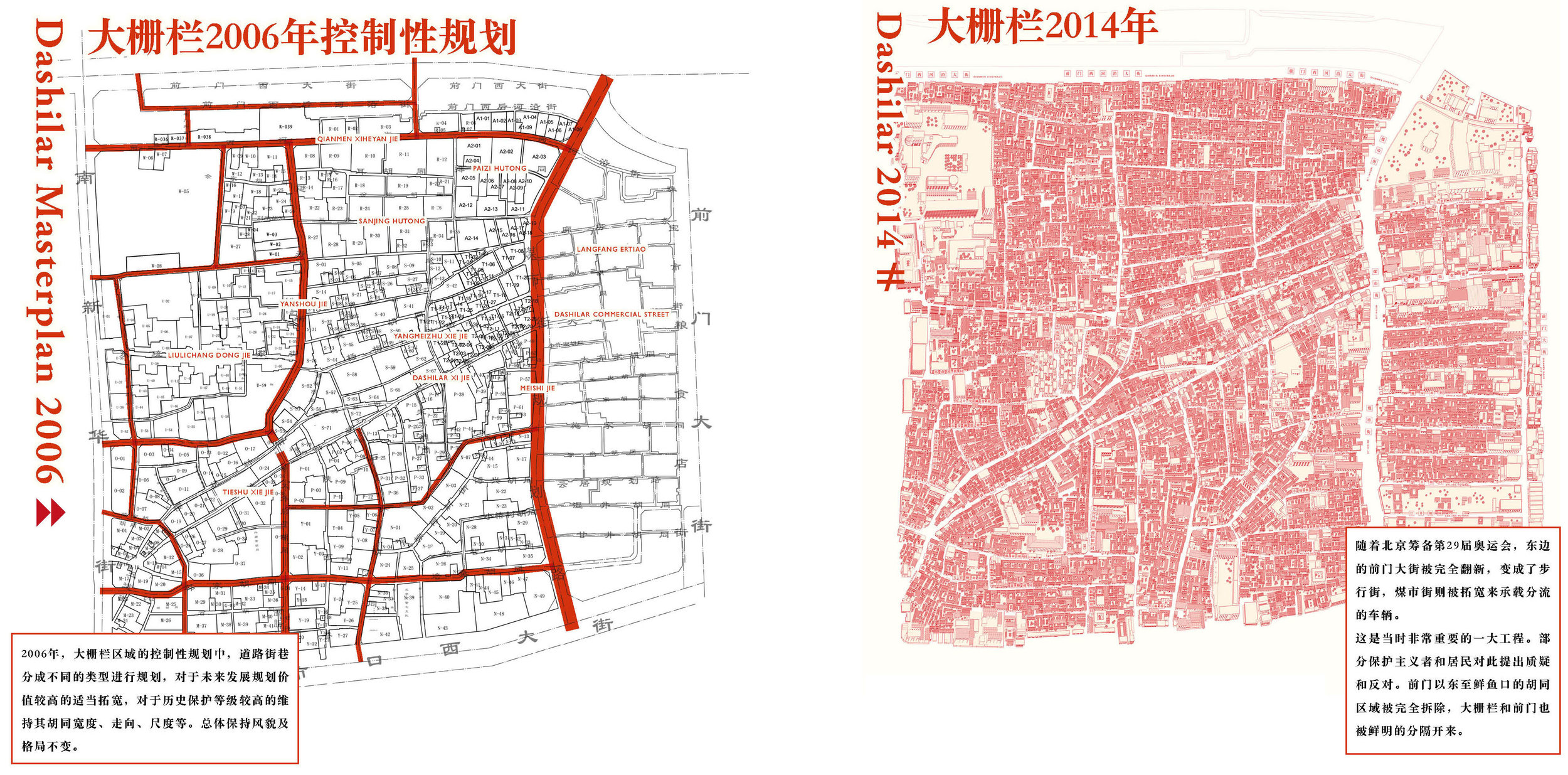


BUILT ENVIRONMENT & PRESERVATION
Across a history of six hundred years, from feudal regime to today’s Communist rule, buildings in the Dashilar area is a miniature of China’s architectural evolution from traditional styles into modern functionality.
BUSINESS ECOLOGY, LOCAL INDUSTRY & CRAFT
INFORM SPATIAL RELATIONSHIPS, NOT BUSINESS TYPES
This relationship is important for heterogeneous yet supportive activities within an area. If we look at a conventional model of redevelopment in Beijing areas and streets are often divided into large blocks of similarly classified activities. This situation is counter-intuitive to both convention business wisdom (Niche-ism) as well as what is the case within our case areas, our “best practice examples.” The focus on Thematic Tags rather than Business type classification, as well as Thematic Tag Relationships starts to edge towards are much more mixed use, village-esque; supportive, rather than competitive, business area model. This underlies Thematic Tag Relationships: the supportive nature of Thematic Tags to other Thematic Tags, and therefore the supportive nature of businesses.
In the Urban Curation Process, programs are evaluated through a thematic quadrant covering Client, Product/ Program, Culture, and Place from which programs can be compared. Comparing the CPCP analysis for each program together, a strong hierarchy between the thematic tags is found. This hierarchy starts to point towards what our Node hubs should be; the most representative activities will create the most representative effect that we are hoping for. However, as to how these highly rated activities relate to lower activities, as well as themselves is not as obvious. The relationship; in this case, a tag’s frequency in occurring in the same activity as other particular tags, alongside the tags strength, is what thetaxonomy intends to illustrate.
DASHILAR NODAL DEVELOPMENT
大栅栏文化、社会、经济血脉及空间结构的保护与更新
DASHILAR PLATFORM
Where all these knowledge sets can be shared and utilized towards these common goals. This platform would be active and required to both find the best partners in addressing a specific problem, and mediate with the developer to facilitate this collaboration. Dashilar Project, in effect, is the platform created to gather and focus these knowledge sets and to implement them in the service of this goal. Both the developer and planner have their own knowledge sets and heuristics, as does Business, government and the community. To an extent and as mandated by policy, every party involved directly, and not speculatively, has the same ultimate goal. Once speculative and unsustainable forces have been removed, this goal can be very simply stated in two statements; The building and housing quality needs to be improved, and the traditional nature, both tangible and intangible, of the area needs to be celebrated as a cultural asset of the city. Every party knows best its own effect in the process, though the effect and knowledge can be very narrow. Where problems arise is in the responsibility of these effects, if the effect does not align with the knowledge, the results and benefit to the city are difficult. The assets were not substantial enough to trade with their usual partners to employ the lacking knowledge sets and skills. Alternatives parties with these abilities are not rare, but do need to be carefully vetted. The developer did not know where these alternative partners could be found, nor did they have the corporate structure and culture to be able to collaborate with them once they were found.
Three phases
The Revitalization and Preservation of Dashilar's Plexus of Cultural, Social, Commercial and Spatial Structures
Three actions
The Dashilar project is comprised of three main actions carried out over three overlapping phases: Identity is the action of developing the identity of Dashilar as a distinct neighborhood in Beijing to the benefit of local businesses and positive perception of local residents. Urban Curation is the action of carefully curating incoming and new businesses and activities within the zone so as to support and influence the direction in which Dashilar develops. Mediation or Management is the support given to new programs either incoming to the area or developed from local programmatic assets, as well as the top down checks, utilising municipal policy, on over commercialisation or touristification of the zone. These three actions are carried out over varying intensity through the three man phases within the project. Firstly is Experimentation, followed by building the New Community, finally resulting in wide spread Adoption of the process.
IDENTITY
map application
Dashilar is historic, but it is also alive and vibrant. During one of the initial meetings a representative from the municipality made suggestions of turning the entire area into a museum. Obviously this is not a good idea for either the residents or the wider population of Beijing. Dashilar is one of the few parts of the old city in which development did occur with societies changes. Rather than placing the neighbourhood under glass, you could add historic information and context as a layer, accessed digitally, upon the whole area. The App and printed maps will function as this layer, the museum, as well as other layers such as directions, events, shopping, eating etc. The viewer can select which layer they want to see, in this way we engage the tourist population, still an important economic driver in the area, without deterring, but encouraging people from wider Beijing to explore the region for their own ends.
dashilar map
The Visual Identity of Dashilar, as part of the overall revitalization strategy, was seen as critical to its success and achievable early in the process. The intention is to be able to provide an asset to both the existing business as well as incoming businesses to help support their economic activity. The VI system is to function in a somewhat open-source fashion, where users can adapt somewhat to suit their own needs. After extensive research and negotiation, Nippon Design Centre, directed by Kenya Hara, agreed to produce the system. The area is a warren of small alleys that sometimes do not meet or terminate in dead ends... So there was a very practical need for the VI to help newcomers to the area navigate. Kenya Hara embedded this function within the VI, resulting in the Map of the area becoming the main visual element from which everything else stems. The logo is secondary to the map.
bjdw & events
Through out the year Dashilar hosts various events aimed at revising the publ ic ’s preconceptions of Dashilar. The largest of these is Beijing Design Week that has been held in Dashilar since 2011. Following this greater interest has been generated within creative communities, as well as the wider business community, producing serious intentions to invest or start their collaborations, businesses or art projects within Dashilar. All of this attracts visitors to Dashilar from wider Beijing who wouldn’t usually come to the area.
dashilar.org / dashilar app
The website is an important access point for both business and visitors to Dashilar, in many cases this may be the first contact so having a considered and coherent voice on the internet is of the upmost importance. From examples and research the website will be packaged in an engaging and well designed format, completely compatible with social media and mobile applications. The App’s interactive map is the base from which all of the other functions stem. Dashilar is notoriously difficult to navigate and drawing customers and tourists to hard to f ind business and attractions will be a challenging task. The Interactive map within the app will help to mitigate this problem. It also works as a sort of attraction in its self; having an app intimately connected to the area is new and exciting and is something just beginning to emerge as we augment our lives more and more with technology of this kind.
CITY CURATION
The task for Dashilar is to now re-envision its past as a heterogeneous yet interdependent mix of business and people both new and old, restoring Dashilars deserved prosperity and traditional vibrancy.
The traditional way of life and pace, along with the exquisite jumble of smaller, family run business do not need to be completely displaced by luxury apartments and multinational chain stores. The task for Dashilar is to now re-envision its past as a heterogeneous yet interdependent mix of business and people both new and old, restoring Dashilars deserved prosperity and traditional vibrancy. Urban Curation is the utilization of the assets the Implementation Organisation has already acquired by inserting selected programs and activities into the urban fabric of Dashilar. In this way we can activate these Nodes to have a radiating effect upon the wider area. Programs are selected through both our heuristics in place making and a quantitative analysis of key criteria. Potential incoming programs are examined through a thematic quadrant covering Client, Product/Program, Culture, and Place, and compared to similar or competing programs. This method of evaluation, creating metrics by which different programs can be compared, allows evaluation as objectively as possible which businesses or activities will be most beneficial to the area, as well as shielding the developer from accusations of cronyism. Another aspect taken into consideration is how incoming businesses integrate and help the local community. The intention is not to compete with existing businesses as it is counter-productive to both parties. Rather, incoming businesses should complement or inspire existing businesses. Instead of inciting straight emulation, incoming businesses should act as “Best Practice Examples” from which existing businesses can learn from and through which they can see new opportunities for themselves. For incoming businesses that are service providers it is encouraged for them to provide affordable services to their neighbours to encourage change and experimentation by some of the existing businesses.
MEDIATION & MANAGEMENT
Local and national government have large reserves of funding for cultural or social activities, particularly for areas such as Dashilar. Unfortunately, the process involved in accessing this funding is incredibly complicated and requires very specific business registration (like a tax code). In this situation, it is usually large business or government organizations that are the recipients of this funding.
In working through the Dashilar Project, and using the Node Plan as a supporting document, small business and activities can gain access to financial support from the government. This process is particularly helpful a small business’ renovation of historic buildings, which is almost always carried out in a more sympathetic manner than when by the developer or another large, state-owned organization.
As the approach is a departure from the normal methods of urban revitalization within China it requires many changes to the Developers usual modus operandi. This is not something that can be implemented quickly and requires compromise by all parties involved. Dashilar Project tries to edge behaviours in such a direction that the Node Plan can implement itself.
Mediation and Management can be divided into two main actions: The mediation required between the Developer and incoming programs, and the communication and inclusion of the community within the project.
The area as it stands is clearly missing some key infrastructure to be naturally attractive to incoming business. Support from the developer can come in the form of both subsides for renovation work carried out and rent discounts for the business assessed as being a “best practice example,” or type A, through the Urban Curation process. Though these businesses may not pay the market rate for rent, their effect is such that the monetary benefit from charging market rates is negligible compared to their effect on the rest of the area. Aside from this, the current compensation costs to purchase properties initially are so high that no significant income, as a percentage of investment, can usually be gained from the acquired properties.
Though supporting incoming businesses this way can be seen as extremely cheap compared to the developers usual expenditure, mediation is still required to convince the developer of the benefits in each individual case. Concurrently, the incoming business must also be informed and guided through their obligations to the project in accepting this support.
Dashilar Pilot
Dashilar Pilot is a long-term project in Dashilar Project, incorporates the various projects carried out in collaboration with Beijing Design Week that address Dashilar specifically. Over few years the brief and direction of these projects have developed further inline with Dashilar’s needs.




